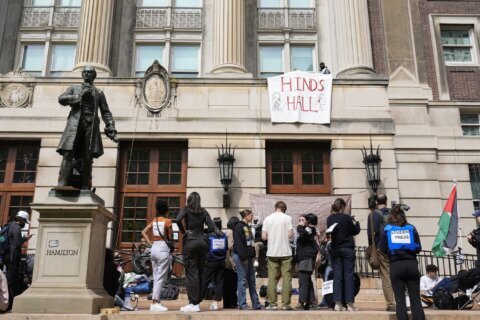Though the percentage of Latino students is on the rise in the U.S., high school textbooks used across the country largely ignore Latino history, a new study has found.
Researchers with Johns Hopkins Institute for Education Policy and UnidosUS, a national Latino advocacy and research organization, developed a list of 222 important Latino history topics, but found only 12% of those were covered well.
The study, released Tuesday, comes amid a rise in the number of Hispanic students in U.S. public schools. Between the fall of 2009 and fall of 2020, the percentage of Hispanic public school students increased from 22% to 28%, according to the National Center for Education Statistics.
Recent growth in the U.S. Hispanic population has been largely driven by births rather than by immigration, the Pew Research Center said in 2022.
Hispanic students are currently projected to become 30% of the U.S. student population by 2030, according to federal education data.
More inclusion in textbooks won’t benefit just Latino students, argues Viviana López Green, senior director of the Racial Equity Initiative at UnidosUS.
“As the country grows more diverse, it’s essential for our future workers, businesspeople, community leaders, and public officials to learn about the contributions and experiences of all Americans, including Latinos, the country’s largest racial/ethnic minority,” Green said in a press release about the study.
According to the researchers, that includes learning more about the Mexican-American War, the Spanish-American War, the U.S. acquisition of Puerto Rico, the Panama Canal, the modern civil rights movement, Cold War politics and legal developments shaping the Latino experience, such as the Voting Rights Act, the Civil Rights Act, and racial segregation.
“The American Latino experience must be accurately depicted to our young people in the classroom if we want them to grow up in a society that recognizes and values the contributions made by people of color,” José Gregory, a U.S. history teacher at Marist School in Atlanta and a consultant on the project, said in a statement.
The researchers made their determination after analyzing five high school U.S. history textbooks and one AP U.S. history book. The study did not include the names of the textbooks.
“This project aims to quantify imbalances that pertain to the entire field, rather than to cast praise or aspersions on any individual publisher,” the news release read. “Our hope is that the findings herein will inspire all curriculum designers, whether publishers or school system leads, to include the longstanding presence, challenges, and contributions of the Latino community in the telling of United States history.”
To pick the textbooks, the research team looked at textbooks used in five states with the largest Latino student populations, along with two states with small Latino populations. Researchers contacted publishers about sales in each state, but they did not hear back, so they contacted the relevant state education agencies instead to pick which textbooks they’d study.
The study authors noted that their results have been unveiled at a fraught time in the U.S. political sphere, and immigration remains an ongoing and contentious issue. The researchers said the situation makes asking questions about the education system even more important.
“Namely, how can we introduce the next generation to the story of the United States in a truthful and empowering way,” the study authors asked. “To what extent must we lament and also honor the past? How do we ensure that U.S. History reflects the complex interaction of diverse peoples whose contributions shape the democracy in which we live today? There are no perfect answers, but the pursuit is worth undertaking together.”







